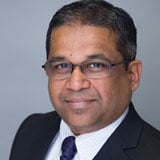Triaging our efforts to achieve global CO2 reduction targets
Triaging is the process of determining priorities and creating an action plan that allocates resources. This is the approach we must take to achieve global CO2 reduction goals. The process begins with revisiting the two-fold fundamental issues and challenges we have in front of us: science and technology, as well as policies and economics—both of which can impede implementation efforts.
When it comes to science and technology for the reduction of CO2, there’s a broad focus on capture (from point source or direct air), utilization and/or conversion, and storage/sequestration. While there continue to be advances made on all fronts, the link to policy, geography, and economics needs better triaging. We’ll be much more effective at implementing carbon capture, utilization, and storage (CCUS) if we take a much more scaled and rapid approach. To give you some perspective, a commercial project of any significant size can currently take three to six years to implement, when started from scratch. In this scenario, time presents the most significant challenge—a barrier that will prevent us from achieving 2030 targets.
Beyond overcoming implementation time cycles, countries and organizations will also have to overcome challenges related to policy and economics, and by that, I mean the lack of alignment that can exist between government and industry. It’s my belief that the best way to move this needle will be to attack the high-density point source of emission, where it’s slightly easier to deal with economics, purely because of scale. To think globally, we must act locally. Consider this approach as a great example: bringing Canada’s and Australia’s technological resources and advancement to China and India, helping to move energy production from coal to natural gas.
Completely eliminating fossil fuels will take time. A managed transition and approach (triage) will be the key to reducing—and eventually eliminating—our carbon footprint. As global citizens, we must look at how we can effectively triage government and organizational policies and goals, as well as technology development to implement better, cleaner solutions. We can do so by determining the rate limiting step, the key to getting as close to, if not achieving, our carbon emission target.

Sanjiv Save
, PhD
Managing Director, Oil & Gas
As Hatch’s managing director of oil and gas, Sanjiv holds a solid background from the ground-up within the industry including technical qualifications, organizational and management skills, excellent problem-solving skills, and the ability to transcend cultural barriers to effectively coordinate projects. He brings over thirty years of professional experience within owner and consulting companies in project and business management for multidisciplinary EPC projects, mainly in the hydrocarbon and energy sectors. This includes the functions of project contract administration, costs control, cash flows, planning and scheduling, besides the design and development of project controls systems. His strong research and development background has led to the publication of several high-quality papers, chapters, and patents. Specific areas of technical expertise include heavy oil upgrading and green fuels, ammonia, hydrogen generation storage and transport, carbon capture and sequestration.